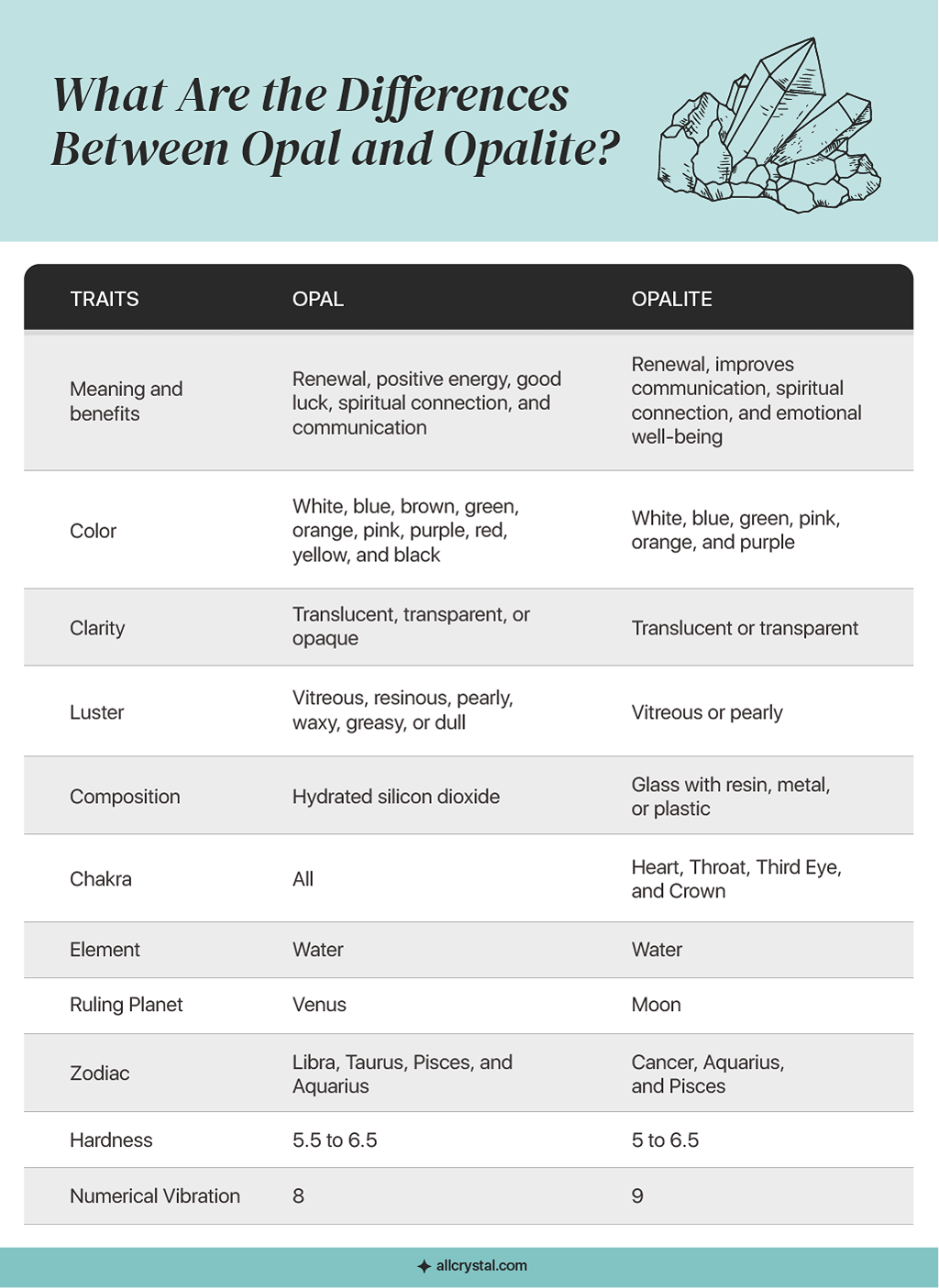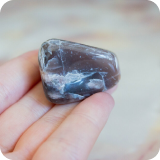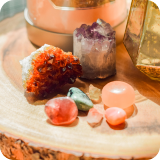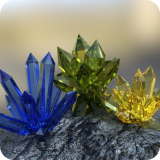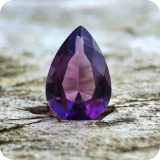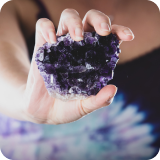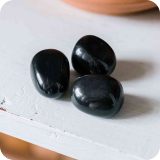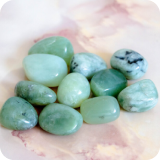- What are Opals?
- What are Opalites?
- 8 Differences Between Opal and Opalite
- 6 Similarities Between Opal and Opalite
- FAQ
- Final Verdict: Opal vs. Opalite
Opal and Opalite are both beautiful in unique ways. They sound so similar and do have some similarities, but they can be worlds apart.
What is the difference between Opal and Opalite? How do you tell them apart?
Opals form naturally in different varieties, which are classified as Precious Opals (displaying play of color) or common opals (no play of color). Initially, Opalite was used as a synonym for Common Opal, but today, Opalite more often refers to glass Opal Simulants.
The distinction between Opal vs. Opalite can be surrounded by some confusion. To learn how to tell these stones apart, we will delve into the details of each of these stones as well as the differences and similarities between Opal and Opalite.
What are Opals?
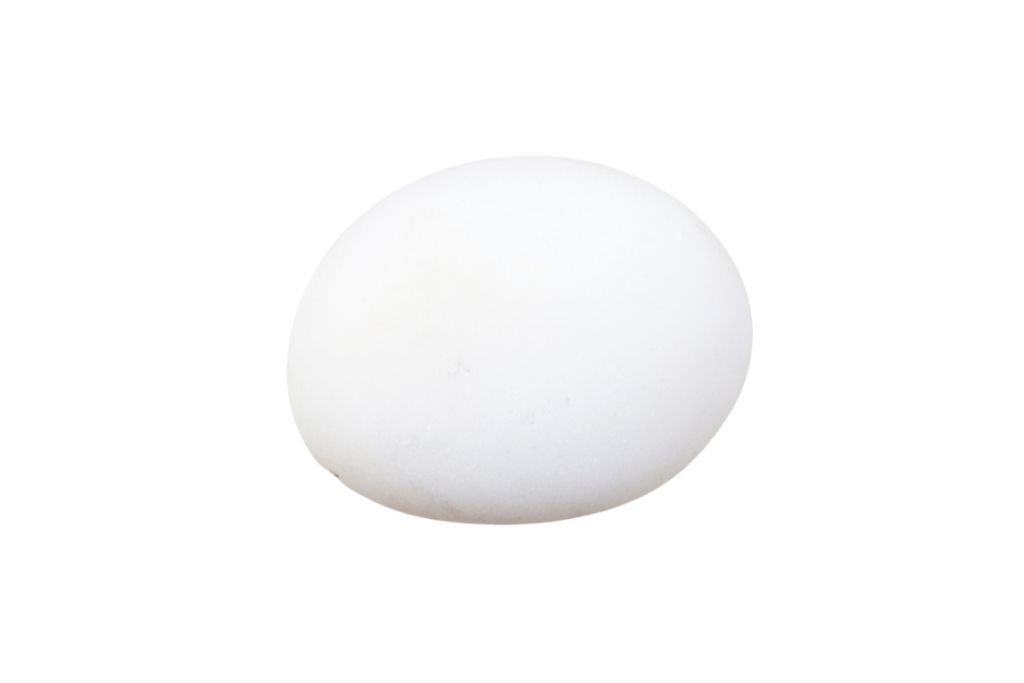
Opal is best known for displaying unique and fantastic spectrum-colored optical effects referred to as play of color. These are highly sought-after, beautiful, and precious mineraloids. They have the appearance of a crystal but lack a true crystalline structure.
Not all Opals display the iridescent effects. Some varieties, which are usually referred to as Common Opals, have also been called Natural Opalites. These are Opals with no play of color effect visible.
It is quite fascinating to learn that Opals can contain up to 10% of water. This stone is closely linked to the Water element and also carries a cooling, calming, refreshing, and cleansing energy.
The magical and crystal healing applications of Opal are related to the balancing and refreshing energy body. All chakras can benefit from the rainbow color energy of this crystal.
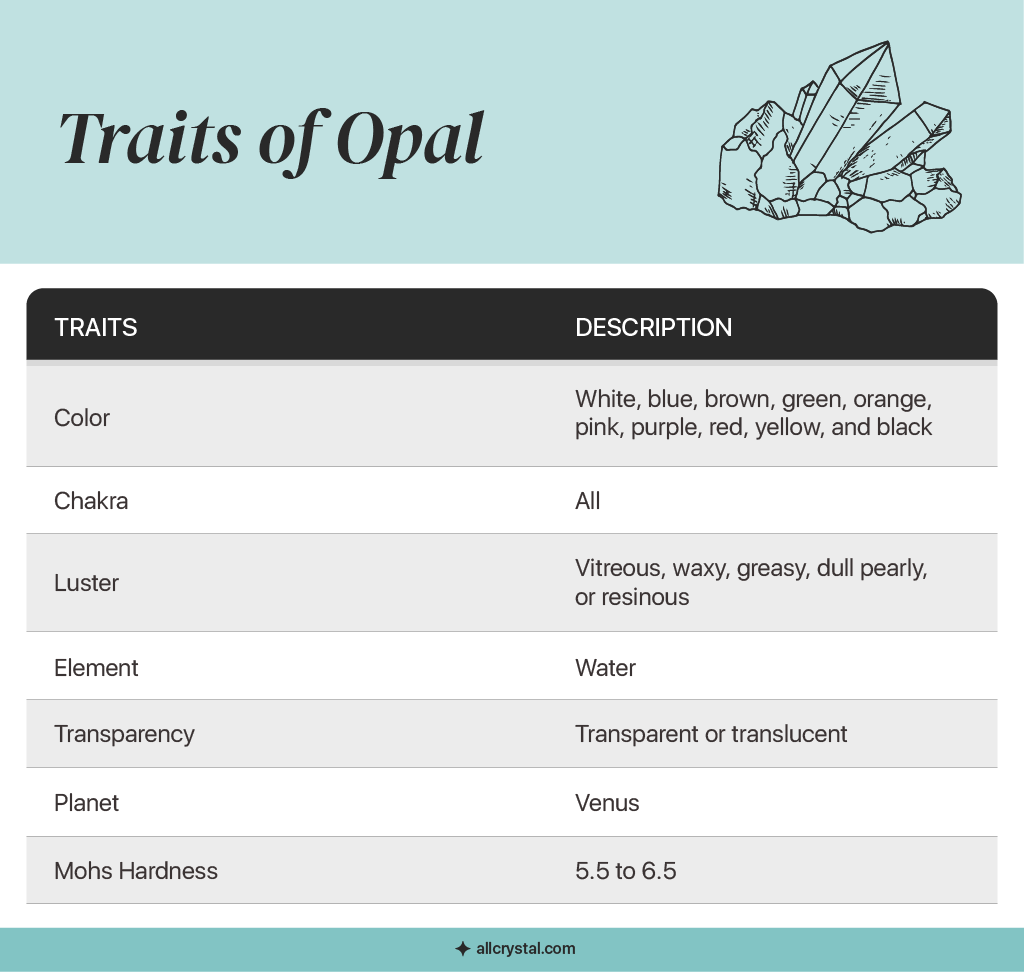
What are Opalites?
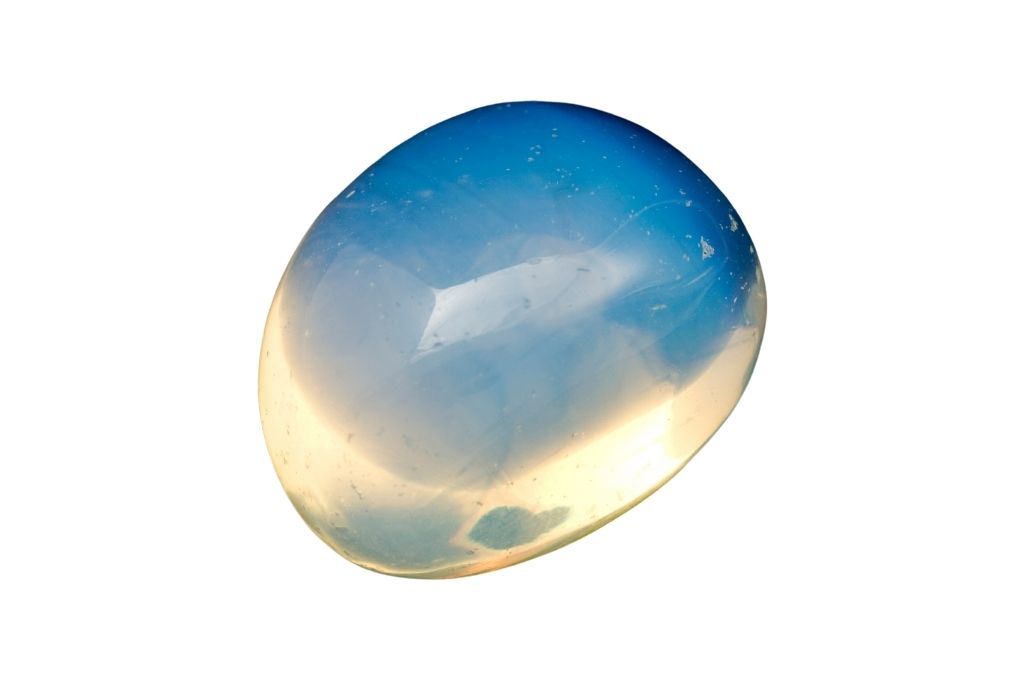
The word Opalite is most often used to name glass Opal Simulants. Opal Simulants are man-made stones that imitate the look of natural Opal but do not share the same chemical composition as the natural Opal.
This term Opalite does have a little confusion surrounding it, as Opalite was originally used to describe natural Common Opals, which do not display a play of color. These are also called Natural Opalites.
Since the 1980s, Opalite has been used more to describe a type of pretty, man-made glass that is transparent or translucent. They can be milky-white or clear and display a luminous glow called Adularescence. The metaphysical effects of Opalite are associated with peace and calmness.
The beauty and creation of this man-made stone signify positive new beginnings and has uplifting and mood-boosting effects. It is innately imbued by the energetics of glass, which include themes of clarity, foresight, strength, vulnerability, and elegance.
Man-made Opalite is a simulant made of glass and is not the same as synthetic or lab-created Opals, which are made by man but share the same chemical composition and metaphysical properties as a natural Opal.
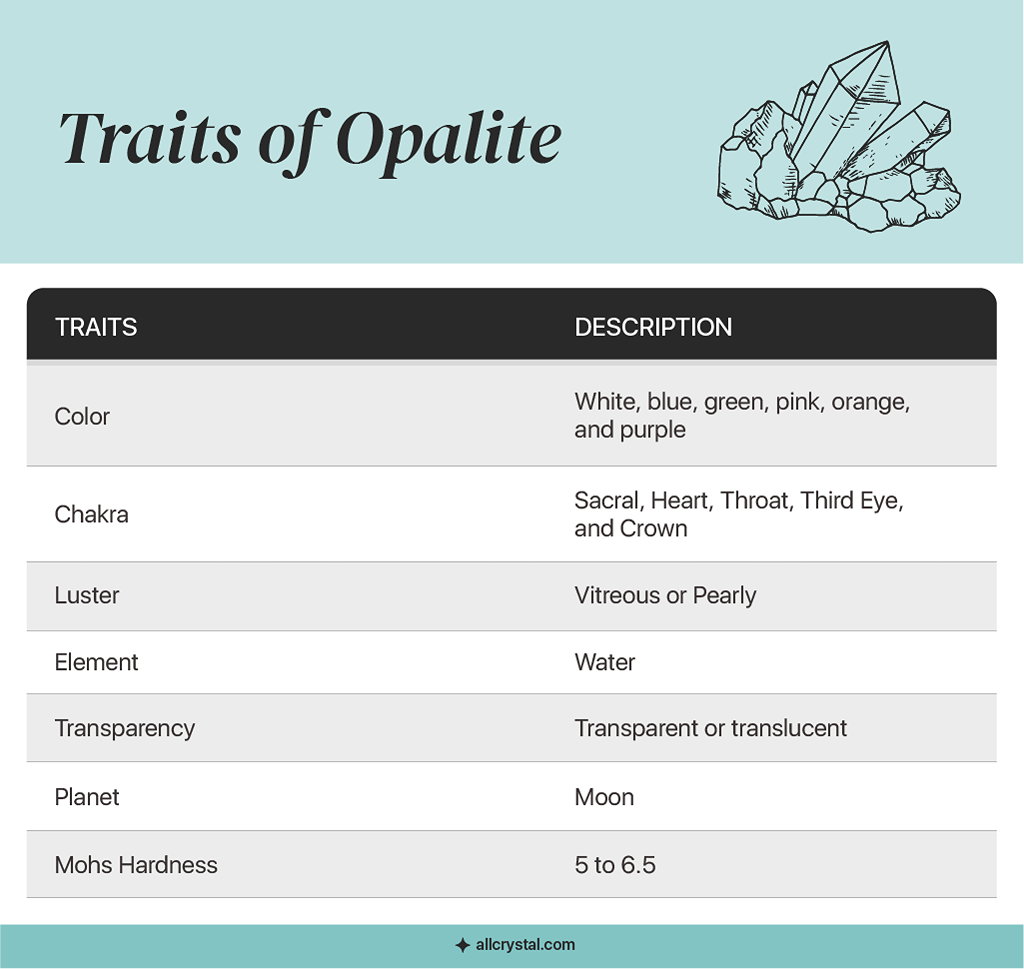
8 Differences Between Opal and Opalite
When referring to the differences between Opal and Opalite, we will be referring to natural, precious, and Common Opals as Opal and glass simulant Opal as Opalite.
Origin
The foundational difference between Opal and Opalite is their origin or the process and location of formation. Opal forms deep within the Earth’s crust in both volcanic and sedimentary rocks. Opalite is created in a man-made environment through a process designed by humans.
Composition
Silica-rich water seeps into the Earth and deposits tiny silica spheres and a small percentage of water. This is the basic process of natural Opal formation, which is composed of hydrated silicon dioxide.
Opalite is made of ingredients that do not match the composition of natural Opals. They are usually composed of glass, which also contains silica but can also include metal, resin, or plastic.
Optical Illusion
Opal and Opalite, more often than not, have different optical effects. Natural Opals display a stunning play of color effect created by the natural formation process which results in spherical silica deposits and trapped water.
Glass Opalite also has an iridescent effect, most commonly a blue Adularescence. Some man-made Opalite can also be created with metal, resin, and plastic inclusions to create a false play of color effect.
Rarity
Opal and Opalite differ in rarity, with Opals being much rarer than simulant Opalite. Real Opal can take a much longer time to form, as well as form in small deposits, and it needs to be found by miners or prospectors.
Opalite can be produced easily to match any demand as it is formed from a human-designed process and glass material that is abundant.
Age
The age between natural Opals and glass Opalite can differ greatly. Opalite can be made in a matter of days as it is created from glass.
Natural Opals were initially thought to have formed over millions of years but more recent studies suggest that with specific natural microbial activity present they can also form in a few weeks to months.
Heat Resistance
Natural Opals are more heat sensitive than glass Opalite, which will be a little more heat-resistant. This is not the case with Opalite pieces that contain plastic and resin, as these materials are also sensitive to heat.
Cost and Value
Opal and Opalite differ greatly in cost, as natural Opals, especially those classified as Precious Opals, display the iconic Opal play of color effect. They are expensive and valuable.
The most expensive variety of Opal (Black Opal) fetches between $50 to $10,000 per carat, and the more common natural Opal varieties are between $10 to $150 per carat. Glass Opalite is significantly cheaper. It is not sold by carat but rather per tumbled stone which fetches $1 to $3 per stone.
Natural Variations in Color
Natural Opal colors form organically in the Earth, and there are a number of varieties that display play of color.
Opalite colors are predominantly milky or translucent with a blue glowy effect against a dark background and a peachy pink glowy effect against a lighter background. It can also display different color reflections in different lighting.
6 Similarities Between Opal and Opalite
Although they are different stones, there are some similarities between natural Opal and man-made Opalite. Knowing the similarities can help us to get to know these stones better.
Hardness
Opalite and Opal are very similar and sometimes are of the same hardness. Both fall around the middle of the MOHs hardness scale. Opal is usually between 5.5 to 6.5 and glass Opalite is 5 to 6.5
Luster
Luster is the visual effect of the way that light interacts with the surface texture of a mineral. Opal and Opalite often share similarities in luster, as they are both predominantly vitreous and sometimes pearly.
Natural Opal can usually have a vitreous or glassy luster. They can also sometimes appear resinous, pearly, waxy, greasy, or dull. Man-made Opalite always has a vitreous or pearly luster.
Transparency
Opal and Opalite can be similar in clarity or transparency. Natural Opals can range in clarity, with stones being translucent, transparent, or opaque. Glass Opalite is most commonly translucent or transparent.
Associated Chakras
Opal and Opalite share the similarities of both being associated with some of the same chakras. Opals with color play are associated with all the chakras.
Opalite is primarily associated with the Throat, Heart, Third Eye, and Crown Chakras. As they have these chakras in common, Opal and Opalite also share healing benefits and properties. Both crystals can improve communication as well as emotional and spiritual growth and connection.
Metaphysical Benefits
Opal and Opalite both have some unique metaphysical properties, and they also share many similar properties. Both stones have a generally peaceful, playful, light, and positive energy that is supportive during times of renewal
Birthstone
These stones are similar in the way that Opal is one of the official birthstones for October, and Opalite is intended to imitate natural Opal. This is why it can also be considered an October birthstone.
FAQ
Is Opalite a Form of Opal?
Yes and No. Opalite has been used as a name for Common Opals that do not display a play of color, but it is more often referring to simulant or man-made glass pieces that intend to imitate real Opal.
Is Opalite Crystal Real?
Yes and No. Opalite can refer to a variety grouping of real Opals, also called Common Opals. More often, they are not real, as they are made of opalescent glass, which does not share the same chemical composition and formation process as real Opals.
Is There Natural Opalite?
Yes, Natural Opalite is referring to Common Opals, which are any natural Opals that do not display a play of color effect.
Are There Fake Opals?
Yes. Simulant man-made opalescent glass can be considered a fake Opal and is also called Opalite. Fake Opals can also include metal, plastic, and resin to try to replicate a Natural Opal brilliant play of color effects.
Is Opalite a Moonstone?
No, Opalite is not a Moonstone, but it is used as a simulant or imitation Moonstone. Opalite and Moonstone do not share the same chemical composition or formation processes.
Which Birth month is Opalite?
Opalite can be considered as a birthstone for October. This is because it is closely associated with Opal, which is one of the official October birthstones.
Who Can Wear Opalite?
Anyone who wishes to enjoy the beauty of Opalite or access its metaphysical properties can wear Opalite. The zodiac signs that should wear Opalite are Cancer, Aquarius, and Pisces.
Is Opalite Always Man-Made?
No. Although Opalite is now predominantly referred to as a type of man-made glass, it can also be a natural stone. Opalite was originally referring to Common Opals, which are real Opals that lack the play of-color effect.
Can Opalite Touch Water?
Yes. As Opalite is usually composed of glass and has a mid-range hardness on the MOHs scale, Opalite is safe to touch water.
Is Opalite a Love Stone?
Yes, Opalite stone can strengthen love as it clarifies and boosts communication on all levels, including the spiritual and emotional. It also has a playful, fresh, and positive energy.
Final Verdict: Opal vs. Opalite
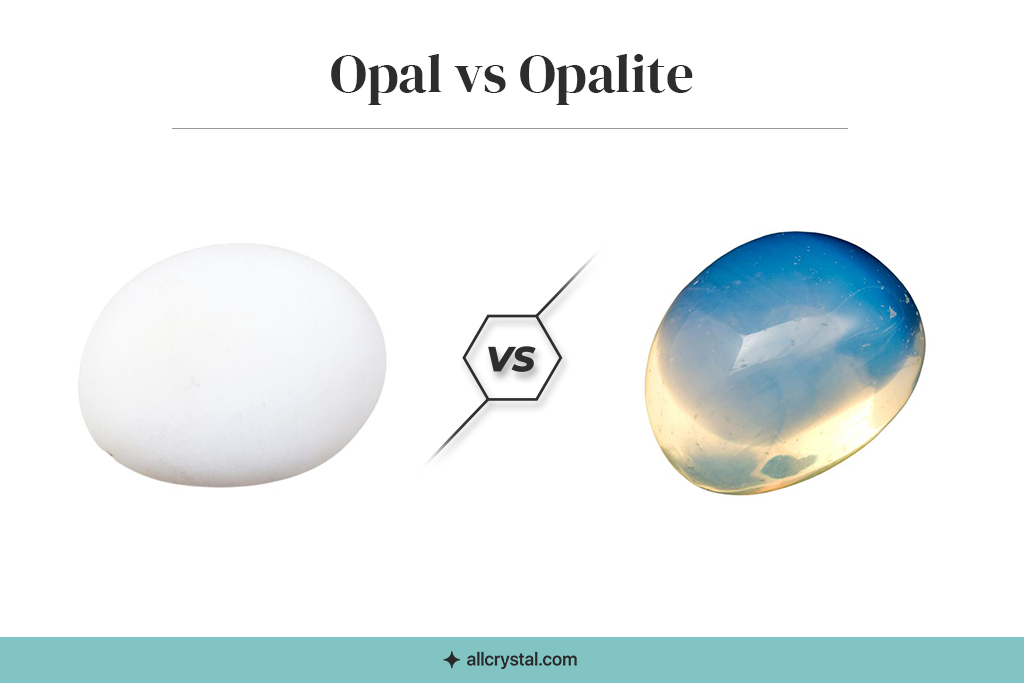
Although they do have some similarities, it is safe to say that, in the present day, Opal and Opalite are fundamentally different, as they have different compositions and are formed by different processes.
These different stones still resonate similarly in terms of metaphysical properties. They are both visually attractive, but the precious or natural Opal formed by the synchronicity of environmental factors has an elevated level of earthly and spiritual magic.
This summary table condenses the information explained in the article above on the differences and similarities between Opal vs. Opalite.
